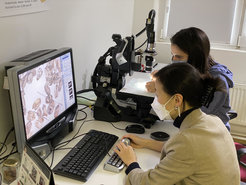Agricultural Intensification, Exchange, and Complexity in Ancient Eurasia
The late first millennium B.C. across Inner Asia is usually considered a period when highly specialized nomads first appear, such as the Scythian mounted warriors. However, new scholarship is showing that during this period, the region of eastern Central Asia actually underwent a process of increasing sedentism and intensifying farming pursuits. In studying this process, we are exploring links between the intensification of agriculture and increases in exchange, population growth, craft specialization, and the development of an elite class.

The long-held model for paleoeconomy in Central Asia suggested that there was a dramatic cultural shift during the mid-first millennium B.C. Academics often portray this change as a marked switch to a highly specialized pastoralist economy and often claim that is was driven by climatic changes. This shift is reflected in the popular literature by the first appearance of the highly specialized nomadic herders of the Central Asian Iron Age (Scythian, Saka, Wusun, and Yuezhi).
With increasing archaeobotanical investigation in the mountains of eastern Central Asia, it is becoming clear that the situation is far more complicated than this model implies. The archaeological data are showing evidence for intensified agriculture, including the likely irrigation of fields, viticulture, and the farming of cops with different growing seasons and labor inputs (effectively staggering the labor demands). Agropastoralists at these sites grew free-threshing wheat, hulled barley, broomcorn and foxtail millet, and grapes. Our understanding of social developments across Central Asia is currently in a state of reevaluation, and further archaeobotanical investigation may show that pastoral specialization took place in some areas, but it is clear that cereals were part of the economy and people were investing significant amounts of time into farming.
